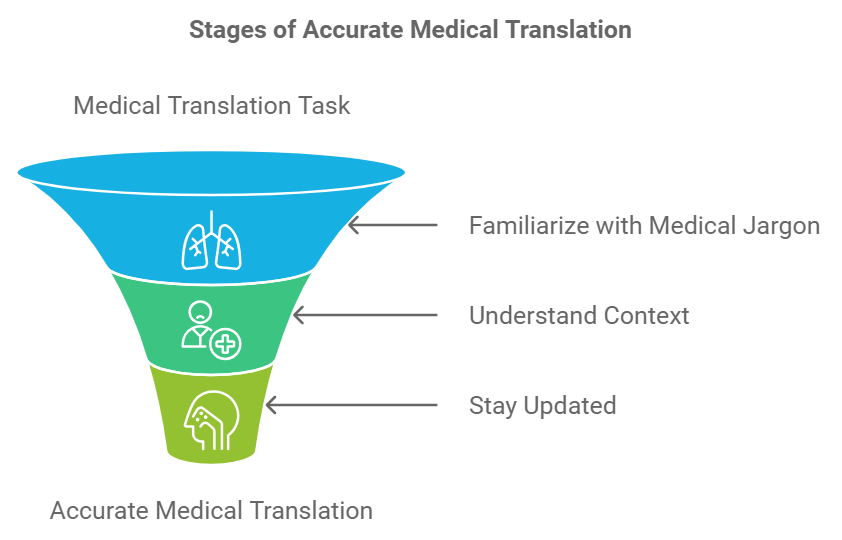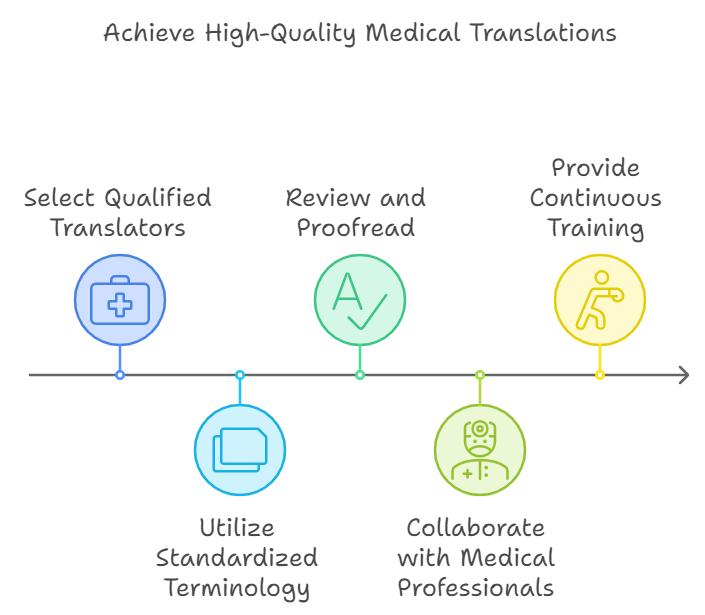Best Practices for Translating
Medical Records
09
Imagine sitting with your doctor, discussing your health in a language that’s foreign to you. You’d feel anxious, right? That’s where the magic of translating medical records comes into play. Today, let’s dive into the best practices for translating medical records. We’ll explore why specialized knowledge of medical terminology and maintaining patient confidentiality are key.
Understanding the Significance of Medical Translation
Medical translation isn’t just about converting words from one language to another. It’s about ensuring that crucial health information is accurately communicated. Consider this: a mistranslation here could lead to misdiagnosis or inappropriate treatment. That’s why precision is non-negotiable.
Why Specialized Knowledge is Crucial
Translating medical records requires a deep understanding of medical terminology. Imagine trying to translate a complex cardiology report without knowing the nuances of the terms. It’s like trying to bake a cake without knowing the ingredients. To ensure accuracy, translators must:
- Be Familiar with Medical Jargon: Terms like ‘hepatology’ and ‘neurotransmitter’ need to be translated accurately.
- Understand the Context: Knowing the context of the medical condition or treatment plan is essential.
- Stay Updated: Medical science evolves rapidly, and so does medical terminology.

Maintaining Patient Confidentiality
Patient confidentiality is the cornerstone of medical ethics. When translating medical records, it’s vital to ensure that patient information is protected. Let’s break down how to do this:
- Use Secure Platforms: Always use encrypted software for transferring and storing medical records.
- Limit Access: Only authorized personnel should have access to the translated documents.
- Anonymize Data: Where possible, remove personal identifiers from the documents.
The Role of Technology in Medical Translation
Technology has revolutionized the way we translate medical records. Tools like translation memory and glossaries ensure consistency and accuracy. But remember, technology is a helper, not a replacement for human expertise.
Comparison Table: Human vs. Machine Translation
| Criteria | Human Translation | Machine Translation |
|---|---|---|
| Accuracy | High (if done by a specialist) | Varies, often lower without human oversight |
| Context Understanding | Excellent | Limited |
| Speed | Moderate | Fast |
| Cost | Higher | Lower |
| Confidentiality | Easier to control | Depends on the platform used |
Practical Steps for Effective Medical Translation
Let’s get into the nitty-gritty of how to ensure your medical translations are top-notch:
- Choose Qualified Translators: Ensure they have a background in medical science.
- Use Standardized Terminology: Consistency is key in medical documents.
- Review and Proofread: Have a second pair of eyes review the translation.
- Engage with Medical Professionals: Collaborate with doctors and nurses to ensure accuracy.
- Continuous Training: Encourage translators to continually update their medical knowledge.

Real-Life Impact: A Story of Success
Consider the story of Maria, a non-English speaking patient who needed a kidney transplant. Thanks to accurate translation services, her medical records were perfectly translated, enabling her to receive timely and effective treatment. Her story is a testament to the power of precise medical translation.
Quotes from Experts
To give you a well-rounded view, here are some insights from experts in the field:
- Dr. John Smith, Cardiologist: “Accurate medical translation is crucial for effective patient care. It’s not just about words; it’s about understanding the nuances of medical conditions.”
- Jane Doe, Medical Translator: “Every translation is a responsibility. We bridge the gap between doctors and patients, ensuring that language is never a barrier to quality healthcare.”
The Importance of Cultural Mediation
Translators do more than just translate. They act as cultural mediators, ensuring that the translated content is culturally appropriate. This is especially important in healthcare, where cultural misunderstandings can lead to mistrust or non-compliance with treatment plans.
Tips for Patients
If you’re a patient needing translation services, here are some tips:
- Ask for Credentials: Ensure your translator has medical translation experience.
- Review the Translation: If you can, have a bilingual friend or family member review the translation.
- Keep Copies: Always keep copies of both the original and translated documents.
Latest Words
Medical translation is more than a technical task; it’s a lifeline for patients around the world. By following best practices, we can ensure that language is never a barrier to receiving quality healthcare. Remember, the next time you see a translated medical document, there’s a team of dedicated professionals working behind the scenes to make sure it’s just right.
Quiz Time!
Let’s test your understanding. Answer these questions in the comments below:
- Why is specialized knowledge crucial in medical translation?
- Name one method to maintain patient confidentiality during translation.
- How has technology impacted medical translation?
I can’t wait to see your answers!
